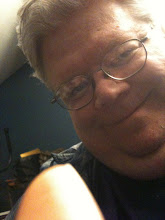I had a story I wanted to send to SYBIL’S GARAGE. It was 6300 words and their limit is 5000, so I clipped off the first five pages of the story, then read through them. When a necessary bit of information came up, I rephrased it as concisely as possible and put it back into the story. By doing this I got it painlessly down to 5000 words.
Well, almost painlessly: It surprised me, and hurt my feelings a little, to notice how many empty words I had used. There was a lot of hemming and hawing going on at the start of my story, before I got down to telling the reader what was going on and why it mattered and to whom.
I am glad I compressed my story.
This is how to compress; you focus on story points, which means information needed by a reader. Ignore the writing. Pretty phrases, detailed descriptions, and soaring metaphors do not matter to the story, nor to the reader. Nor should they matter to the storyteller.
Present story points as efficiently and elegantly as possible. Doing this allows you to retain a satisfying story while avoiding wordiness.
If in doubt whether a given item is a story point, leave it out. Does the story still make sense? If so, keep it out. If not, put it back in, as concisely as you can.
Hemingway was a master of what to leave out. One of his basic methods was to present events without mentioning their context. Instead, he implied it.
This led to powerful impressions and removed the events from specific dates and places. It lent a universal quality to the people and actions he told of.
Hemingway was also celebrated for his style. Some call it blunt, others terse. Short declarative sentences built of plain nouns and basic verbs allowed his style to paint pictures, and offer impressions, stroke by stroke. He once said he wanted to write the way Cezanne painted. This is what he meant by that.
His effect was cumulative, but notice something. Much of his celebrated style is nothing more or less than newspaper writing. It is factual and direct. He offers story points as efficiently as possible. His style came from his blunt manner of including story points. The opening of The Old Man and the Sea shows this.
Hemingway wrote many more pages than he ever published. All writers do. This points to another of his methods, which was to write everything he could think about about a scene, then cut it later. He removed all the bullshit, as he called it. He wanted to leave only what was true.
True, not factual: His goal was to write one true sentence, then another, and keep going until his story was told.
You can see how this worked if you take a story you have already had rejected a few times and look it over. First, list its story points. Once you have this list, look how they are presented.
Can you state them for the reader in a better way? More efficiently? More elegantly?
Is every sentence true?
Rewriting a story that has been rejected many times is a good way to learn how to write a better story in the first place. Go over it sentence by sentence, and take out the crap. Anything not needed by the reader to understand the story must go.
Some will wonder about descriptions.
Curious George had adventures with the man in the Yellow Hat. In those stories, the color of the man’s hat mattered. Was it a Stetson, a Bowler, or a Beret?
Did that matter?
Was it too tight for him, or did it fall over his eyes?
Did that matter?
Write as if telling a joke. Every detail should set up the punch line in a joke. No detail that does not help the punch line should be included. Extra details will only blur the joke and lessen the punch.
It is the same with fiction. If a detail matters, keep it. Otherwise, get rid of it. Descriptions should be concise if needed, avoided if not needed.
If it matters what kind of car, state it simply. If it matters what color a house is, or what the bar looked like, let the reader know. Otherwise, cut it.
A man walked into a bar.
That is a classic opening for a joke. The humor often relies on details revealed as the joke continues. Listeners perk up at each detail, imagining how it might end up being funny.
Any detail that is not funny at the punch line will puzzle the listener, and lessen the laughter. Each detail must be relevant to the punch line, or it does not belong.
It works the same with all fiction.
A short story needs a point, and anything not helping to make that point is not only a burden, but a potential sabotage. Look at your rejected story. Are there details leading nowhere? Why are they there?
Edgar Allan Poe, one of the inventors of modern short story form, advised that, in a short story, one thing happens. All supports that one thing. Every word should be chosen with an eye toward how it helps the one thing happen.
Story points let you X-ray your fiction for dead spots. Cut them out and your writing can thrive.
/// /// ///
Saturday, September 1, 2007
Subscribe to:
Comments (Atom)







